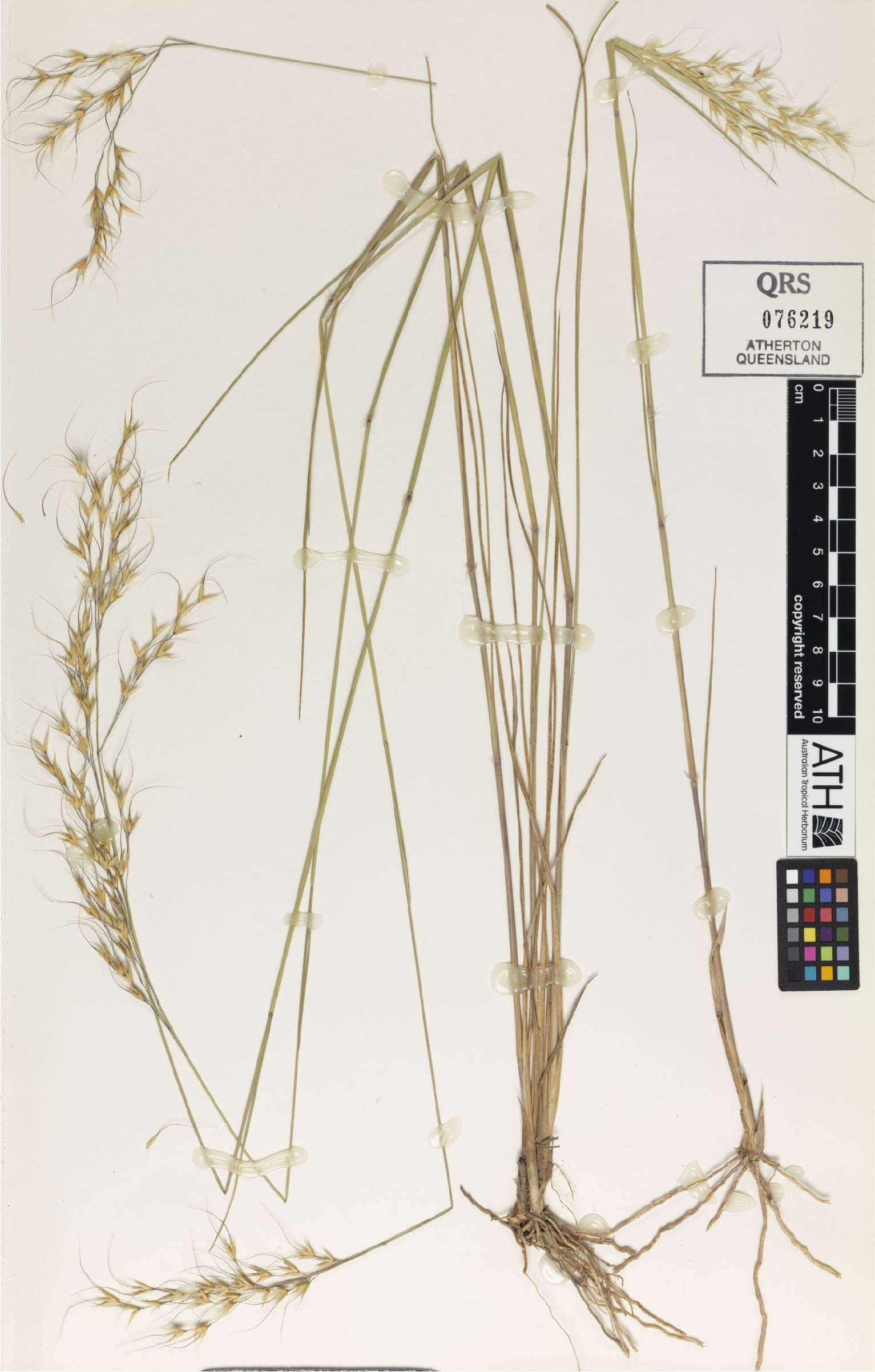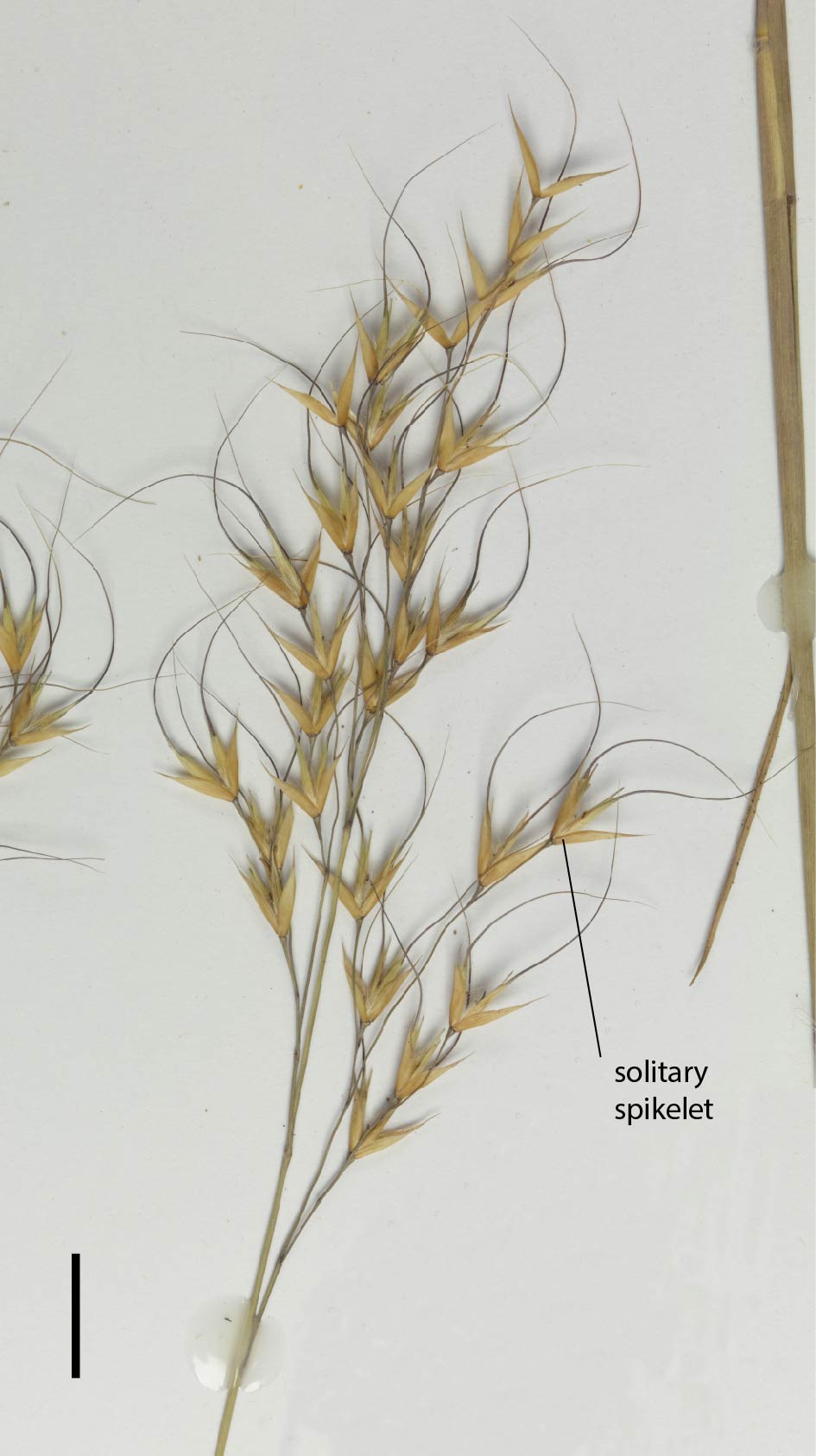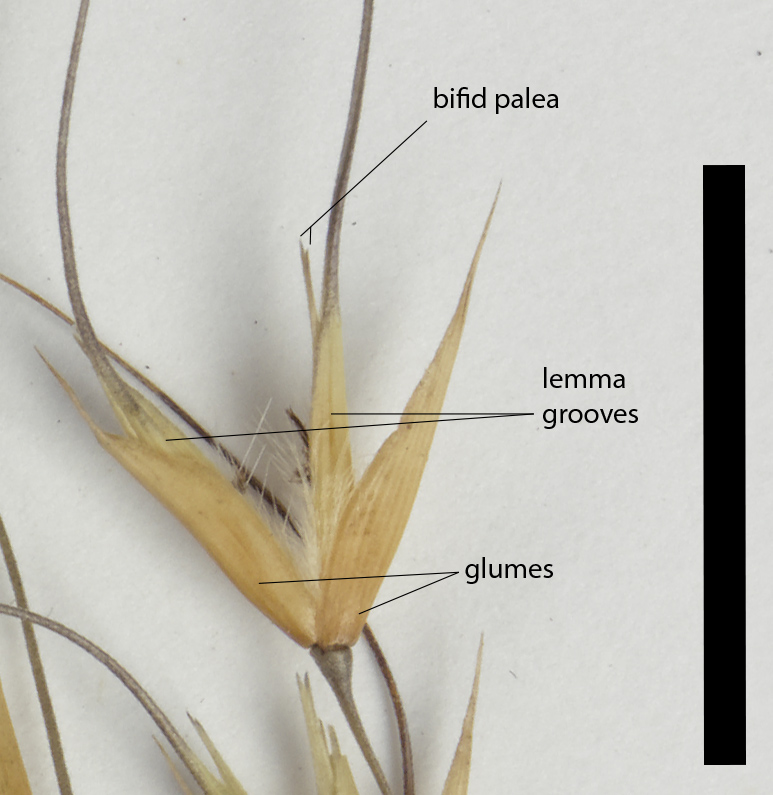Eriachne burkittii
Jansen
This species occurs in Cape York Peninsula as an erect short-lived perennial, 60-125 cm high and is often blue-green in colour with a whitish bloom. Stems are usually hairless although bearded or pubescent along stem nodes or joints, often tinged purple. Leaves are cauline (arising along the stem), hairless or hairy, with blades to 35 cm long (Fig. 1), sometimes with bladder like sacs on upper surface. Inflorescences or flowering branches terminate the stem and are well exserted some distance from leaf axils. The inflorescences or flowering branches are loose to open drooping panicles with branches arising along a central stem, panicles are 10.5-19 cm long, 1-6 cm wide (Fig. 2). Eriachne burkittii has spikelets (the basic flowering unit) consisting of two glumes encompassing two bisexual florets (modified flowers) (Fig. 3). The florets are slightly smaller, equal to or exceeding the glumes, with the lemma of each floret giving rise to a curved awn 10-27 mm long, the palea of each floret is tapered to a point or with two small teeth at apex.
Botanical Description
A short-lived perennial species to 125 cm high. The culms or stems hairless, often purple, with nodes bearded, tuberculate bearded or pubescent, rarely hairless. Leaves are hairless to quite hairy; leaf blades to 35 cm long and up to 5 mm wide, sometimes with vesicles on upper surface. The inflorescences are loose to open drooping panicles, 10.5-19 cm long, 1-6 cm wide (Fig. 2). Spikelets are defined by two glumes 4.3-10 mm long, each with a sharp point at the apex or with an awnlet to 1.5 (-4) mm long. The glumes encompass two bisexual florets, the florets shorter than or exceeding glumes by 1-2.5 mm, the lemma 5-7 mm long, cartilaginous. The lemma of each floret is awned, the lemma awn 10-27 mm long, with the palea of each floret entire or with two short teeth (Fig. 3). The lemma is hairy in lower 1/3-1/2 with hairs not exceeding the apex, and with two grooves present.
Diagnostic Features
Eriachne burkittii is one of many species of Eriachne characterised by long awned spikelets, the awns curled, curved or bent. Other long awned species of Eriachne which occur in the region and may be easily confused with this species are E. armittii, E. glauca, E. squarrosa, E. stipacea, E. vesiculosa and E. rara. Some of these species are more easily distinguished than others. Most are treated in this guide, however some of the key differences between the species are shown in Table 1. In other regions of Australia e.g. the Northern Territory, additional species may also need to be considered. Eriachne burkittii is distinguished by the combination of the following characters, a leafy perennial habit, culms often purple coloured, firm glumes, the florets usually longer than glumes and the entire or two toothed apex of the palea. Users are encouraged to consult Lazarides (2005) or Simon & Alfonso (2011) for more detail on distinguishing between these species.
Natural Values
This species is likely to provide seed for granivorous or seed eating animals.
Habitat
This species occurs in northern Australia north of 18˚S and also in Papua New Guinea. Found in wet areas especially seasonally inundated, heavy clay floodplains, as well as margins of swamps and lagoons, alluvial floodouts, seepage areas and drainage depressions (Lazarides 2005, Simon 2011).
Land Management Notes
Species of this genus are considered generally to be of low forage value (Lazarides 2002).



Resources
AVH (2017) Australia’s Virtual Herbarium, Council of Heads of Australasian Herbaria, <http://avh.chah.org.au>, accessed 30 May 2017.
Lazarides, M. (1995) The genus Eriachne (Eriachneae, Poaceae). Australian Systematic Botany 8(3): 355-452.
Lazarides, M. (2002) Economic attributes of Australian grasses. Flora of Australia 43: 213-245.
Lazarides, M., Weiller, C.M. & McCusker, A. in Mallett, K. (ed.) (2005) Eriachne. Flora of Australia 44B: 132-175.
Simon, B.K. & Alfonso, Y. 2011. AusGrass2, http://ausgrass2.myspecies.info/accessed on [20 March 2017].

